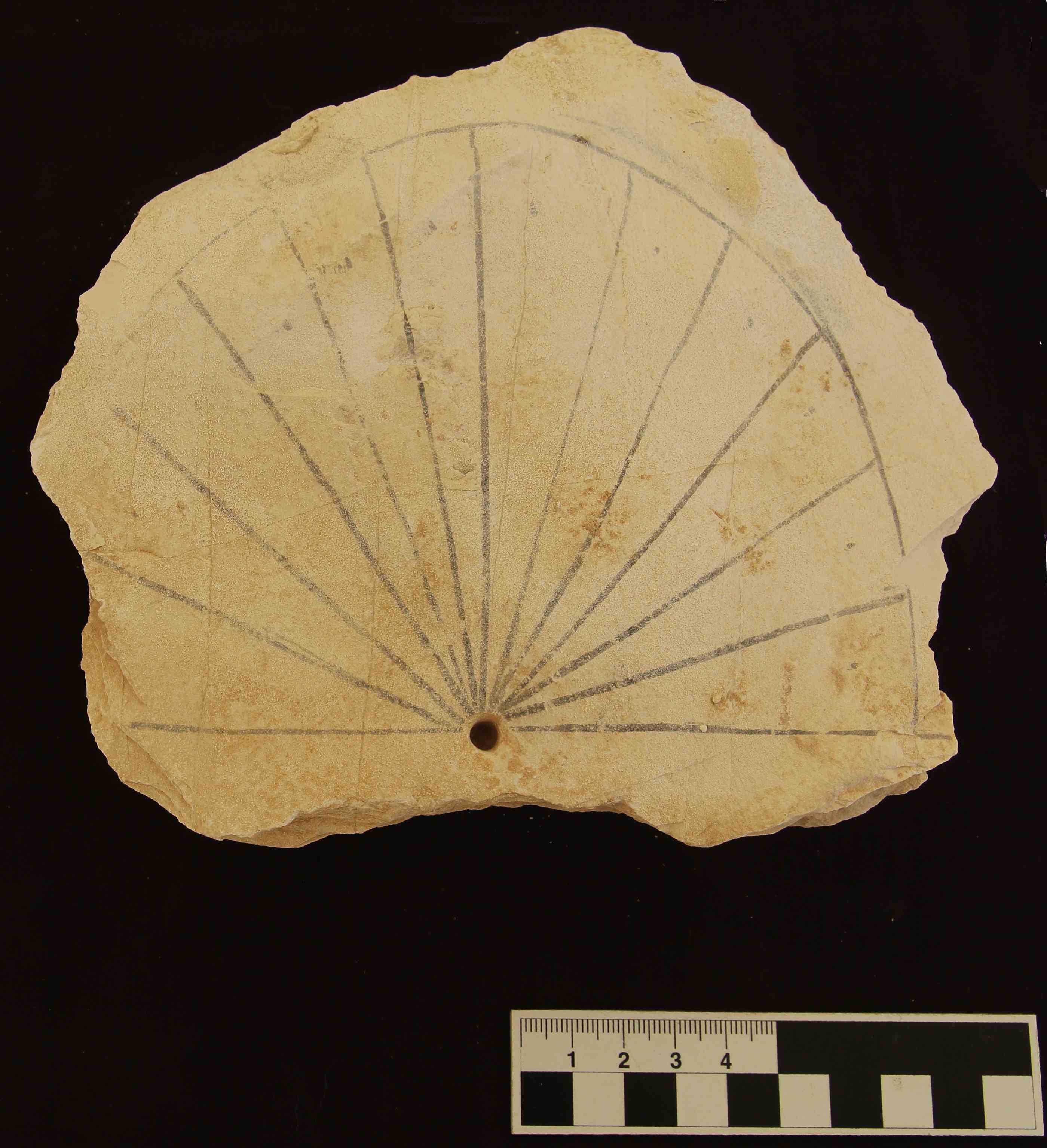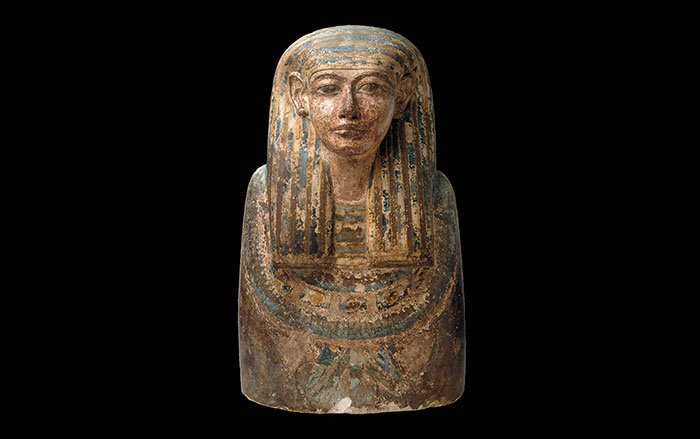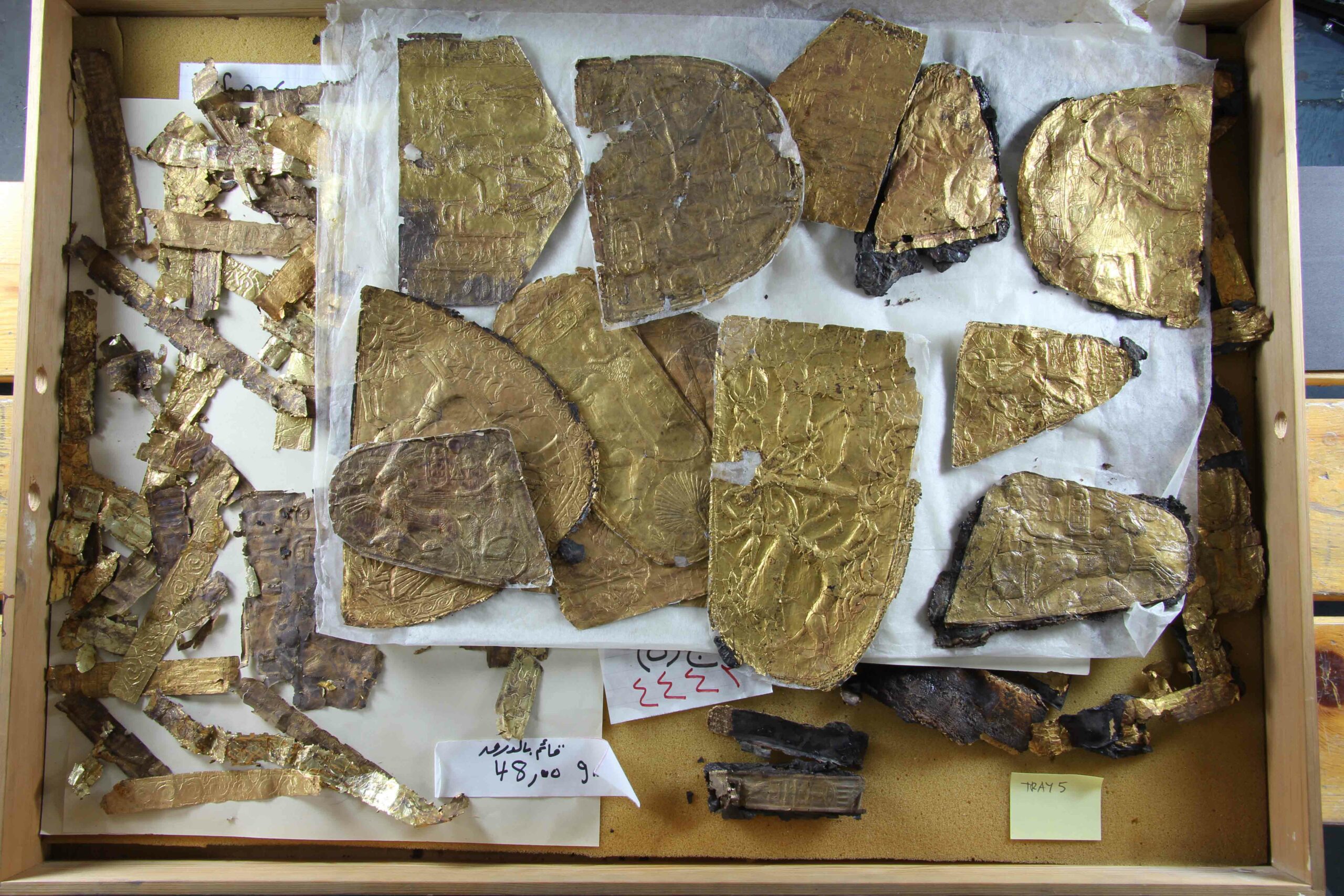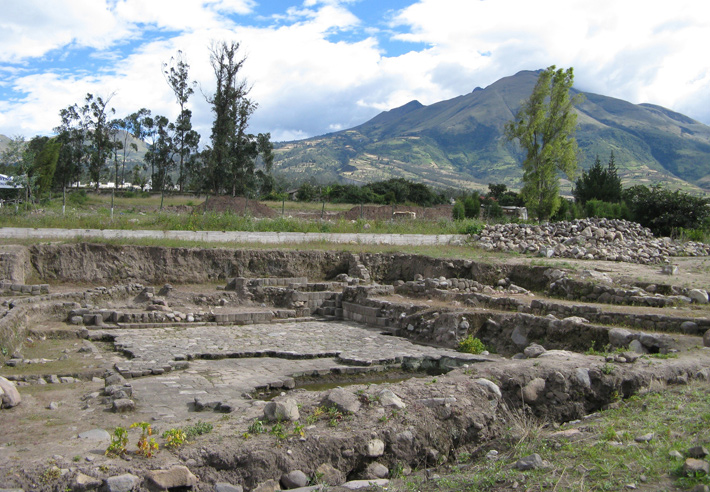
VALLEY OF THE KINGS, EGYPT—Archaeologists from the University of Basel have unearthed one of the earliest sundials ever found in Egypt. Dating to the 13th century B.C., the flat piece of limestone is covered with black lines describing a semicircle divided into twelve sections. It would have been inserted with a bolt that cast shadows that showed the hours of the day. The team discovered the artifact amid the remains of stone huts that were occupied by workers who built lavish tombs nearby. The archaeologists speculate that the laborers used the sundial to keep track of the hours they worked.










